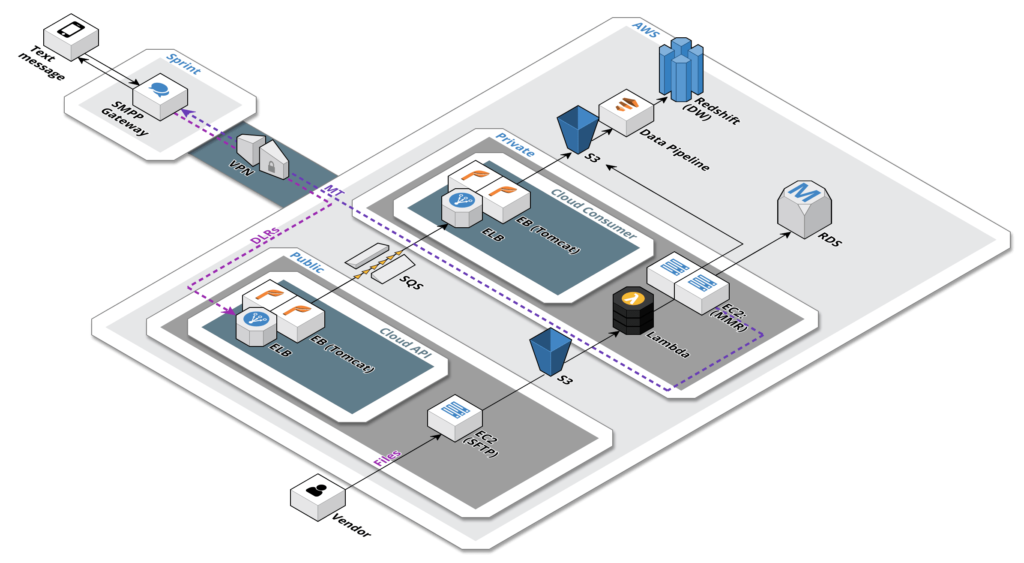Thorn Technologies helps a top-tier wireless carrier migrate its SMS marketing platform from on-premise servers to Amazon Web Services to increase uptime and throughput, maintain flexibility, and cut costs.
The Problem
A top-tier wireless carrier’s SMS marketing platform, which Thorn Technologies designed and developed and is used to send over 3 million messages per day, was being run on on-premise servers. This was the norm years ago when the SMS system was initially built, but this platform software was showing its age.
The on-premise server hardware was failing at a high rate, and a lot of money and time was being spent on replacing hard disks.
The performance of the system was deteriorating as well. Message send limits were being reached and reports took up to 24 hours to run.
The client’s SMS platform’s infrastructure needed to be improved, and fast.
The Solution
Thorn Technologies led the effort to migrate the SMS platform to Amazon Web Services.
To move the client’s data to the cloud, Amazon RDS was set up and a virtual private network (VPN) between the legacy application’s data center and an Amazon Virtual Private Cloud (VPC) was created.
Amazon EC2 instances were launched. The client’s web and SFTP servers were then moved to these instances and modified to save data on S3 instead of on local hard disks.
Then a new VPN was created to increase the speed of the network connection between the client’s servers and AWS.
Finally, a cloud queueing platform was developed that allowed the client to continue to use the SMS software while the migration took place and avoid system outages and maintenance downtime.
Thorn Technologies continues to implement additional improvements and optimizations to the platform.
The Results
The client benefitted greatly from moving its SMS platform to AWS.
The performance of the platform increased significantly:
- The SMS send rate increased from 250 to over 700 messages per second.
- Daily message capacity scaled from 2 million to over 10 million.
- The system can now process over 1500 delivery status notifications per second.
- Reporting data can be available in 15 minutes, as opposed to 24 hours.
Hardware failures were a thing of the past, maintenance of servers for hardware issues was no longer necessary, costs were cut, and the system can now scale extremely quickly.
[thrive_leads id=’8366′]


